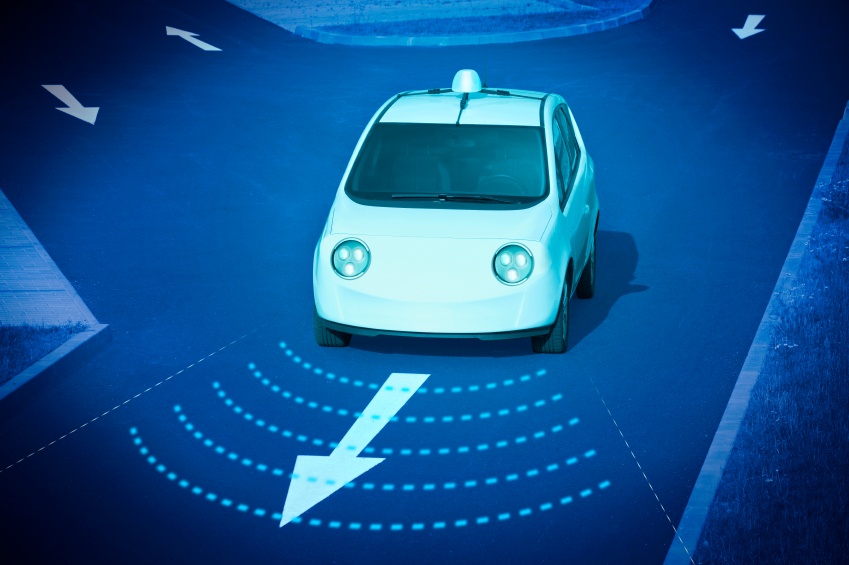The term disruptive technology is often overused (and typically just marketing hype), but there are some technologies that evolve over time, having an ever increasing impact on our lives. 3D Modeling is one such technology, often unseen by the public, but changing the way products and systems are designed. Some industries such as aviation could not dream of returning to a world of 2D drawings. But other industries have been slower to adopt the technology, or have limited its rollout.
What does the future hold for 3D modeling? This blog post looks at three areas on the impact 3D modeling on the lives of consumers.
Personal Mobility
The advent of self-driving cars promises to drastically change the landscape of personal mobility, enabling a personalized mass transit system. For example, self-driving cars could impact the layout of our cities, removing the need for so much parking providing more greenspace and housing. Or imagine the impact on self-driving cars on the lives of the elderly, allowing them to regain freedom and independence in their lives. These impacts are on top in the reduction in the number of lives lost in traffic accidents.
But what is an essential technology behind self-driving cars? It is 3D modeling. To illustrate, there are two major approaches to guiding self-driving cars:
- Fully autonomous – this is Google’s approach relying on a pre-generated centimeter-accurate world map.
- Autopilot – this is the route that Tesla has chosen, relying on a subsumption architecture that requires a less accurate world map constructed over time, relying on the ability of the car to handle most operations.
Regardless of the approach — Google’s or Tesla’s — both rely on a 3D world map to be able locate the car to navigate to the destination, locate obstacles, and avoid collisions. Using an array of sensors, whether radar, sonar, cameras or laser, to detect and map the road, signs, other vehicles and obstacles which are then compared to the internal map to plot a course and/or take corrective actions. These approaches place huge demands on modeling engines, which in turn will force improvements in 3D modeling engines.

Bespoke Manufacturing
Bespoke manufacture, a sexier term for mass customization, has begun to impact our lives in a number of ways. The concept behind bespoke manufacturing is taking standardized design, but be able to easily customize the design to fit the customer. Obviously, additive manufacturing or 3D printing is a key enabling technology. But additive manufacturing cannot exist without 3D modeling, which allows the easy customization of a standardized design.
A prime example in the consumer space is shoes, where consumers spend a great deal of time trying to find properly fitting shoes. One company, Feetz, is rolling out a customizable 3D-printed shoe. Customers use a smartphone app to photograph their feet, which is turned into a 3D model used to modify the shoe model prior to printing. As a result, the company boasts of offering shoes in seven billion sizes.
While customized shoes that finally fit are important, a much larger impact on our lives can come from mass customization in the medical arena. In a past blog post, we have discussed the emerging field of biomechatronics, where electronics, mechanics and bionics converge to deliver the next-generation of prosthetics. A prime example is powered prosthetics developed by the Biomechatronics research group at MIT where the lower-limb must be modeled to understand the internal structure plus the strength of individual tissues and muscles used to control the limb. So while the basic limb is a standard construction, the attachment and sensor structure must be modeled and manufactured for each client.
But the future is going to extend mass customization to the operating room where surgeons will insert coronary vein stents and replacement joints customized to fit the patient. Soon patients will have their affected arteries and joints 3D modeled to determine the exact configuration and size needed. This model will then be used to modify the model of the stent or joint and then 3D print the device, obviating the need for stocking an array of device sizes and eliminating fit issues.
An End to Overdesign
Overdesign is a classic problem in engineering. In the past, bridges, airplanes, etc., were designed stronger than they needed to be because of limitation in accurately modeling the structure. Because designers knew their existing models were approximations, they added strength to the design to compensate for potential errors in their calculations.
Even with current 3D modeling, objects are often constructed and structural analysis only performed after the fact to ensure specification compliance. The original design would often only be changed if it failed to meet specifications — time and money was not spent to optimize the design.
But with improvements in both 3D modeling and computational speeds, structural analysis using finite element analysis can be conducted simultaneously with the actual system design. This concurrent approach allows the model to be fully vetted before manufacture, not only ensuring compliance, but also optimizing cost and weight. For example, cars will be optimized to reduce their weight, thereby improving fuel efficiency, or the amount and cost of building materials can be reduced in construction.
3D modeling is fundamentally changing how we view design and manufacturing. Soon the concept of “customized for me” will be commonplace.


















